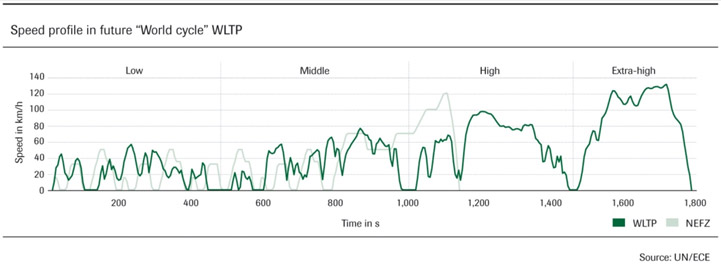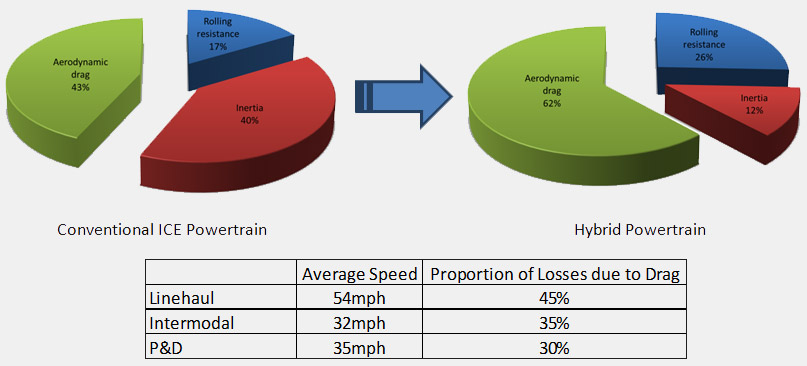“The Effect of Aerodynamic Drag on Fuel Economy”Aerodynamic drag is proportional to the square of velocity, and hence the power needed to overcome drag is proportional to the cube of velocity. This means that there is a very strong relationship between the speed that a vehicle is travelling and the proportion of the fuel used to overcome drag.
The second is that as more and more vehicles are hybridized, then the regenerative braking reduces the effect of weight, and hence increases the proportion of the total losses coming from aerodynamics. For a high speed cycle with multiple acceleration and deceleration events this increase can be as much as 44%. Finally for trucks the conventional wisdom has always been that aerodynamics is only really important for line haul where average speeds are high, but because both intermodal and P&D cycles do incorporate some high speed driving aerodynamics is still important for them as well. |
 |
 |
 |
KEEP UP TO DATE ON CURRENT ARC TECHNOLOGY
Join the ARC Newsletter, the Inside Track with ARC

Motorsports Production Commercial Government
Auto Research Center © 2025. All Rights Reserved. Terms of Use . Privacy
Address: 4012 Championship Drive, Indianapolis, IN 46268
Phone: 317-291-8600 Fax: 317-291-8700 Email: sales@arcindy.com
 For passenger cars this means that aerodynamics is responsible for a much higher proportion of the fuel used in the highway cycle than the city cycle: 50% for highway; versus 20% for city. This means that if you make a 10% reduction in aerodynamic drag your highway fuel economy will improve by approximately 5%, and your city fuel economy by approximately 2%.
For passenger cars this means that aerodynamics is responsible for a much higher proportion of the fuel used in the highway cycle than the city cycle: 50% for highway; versus 20% for city. This means that if you make a 10% reduction in aerodynamic drag your highway fuel economy will improve by approximately 5%, and your city fuel economy by approximately 2%.
